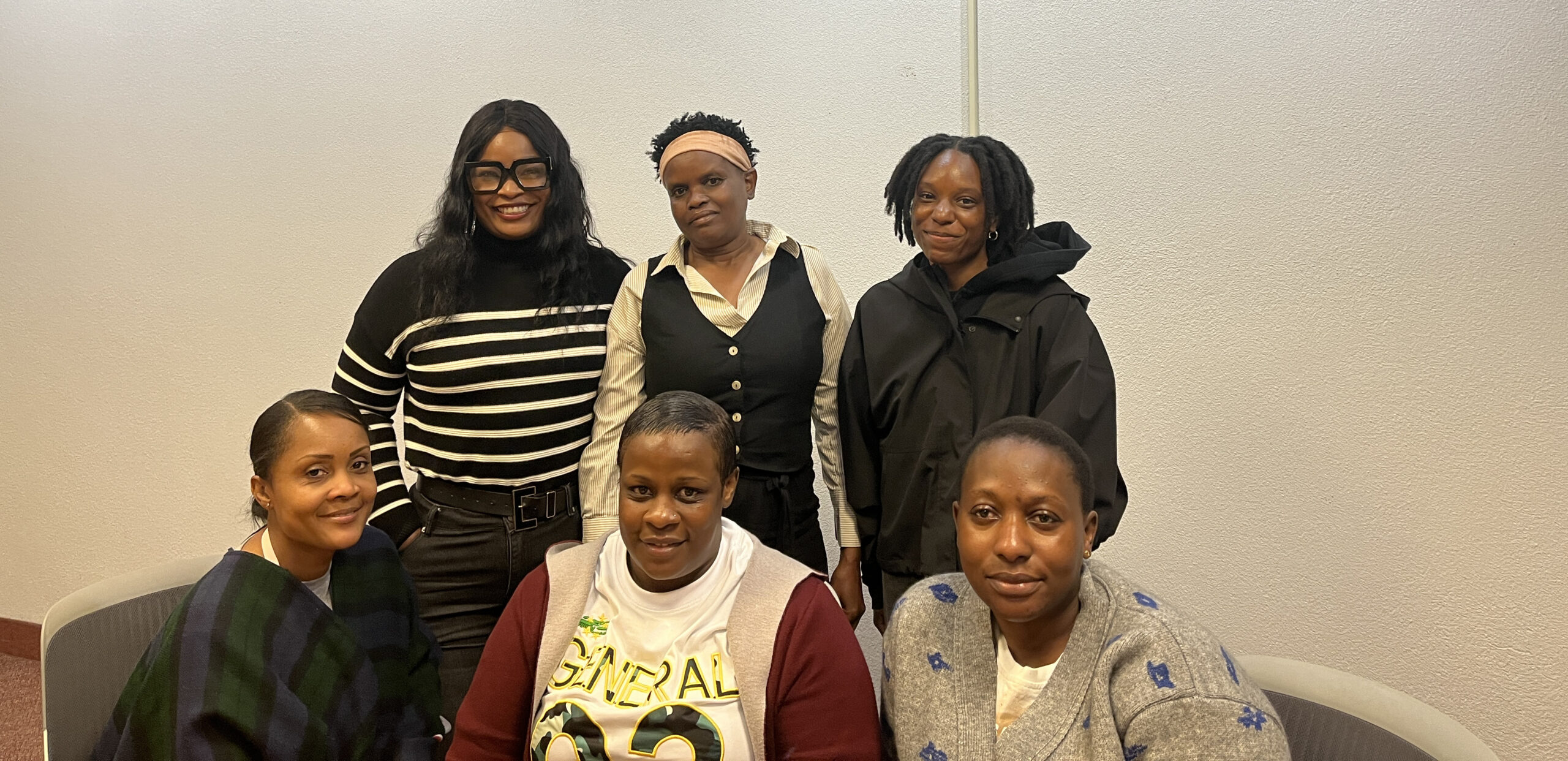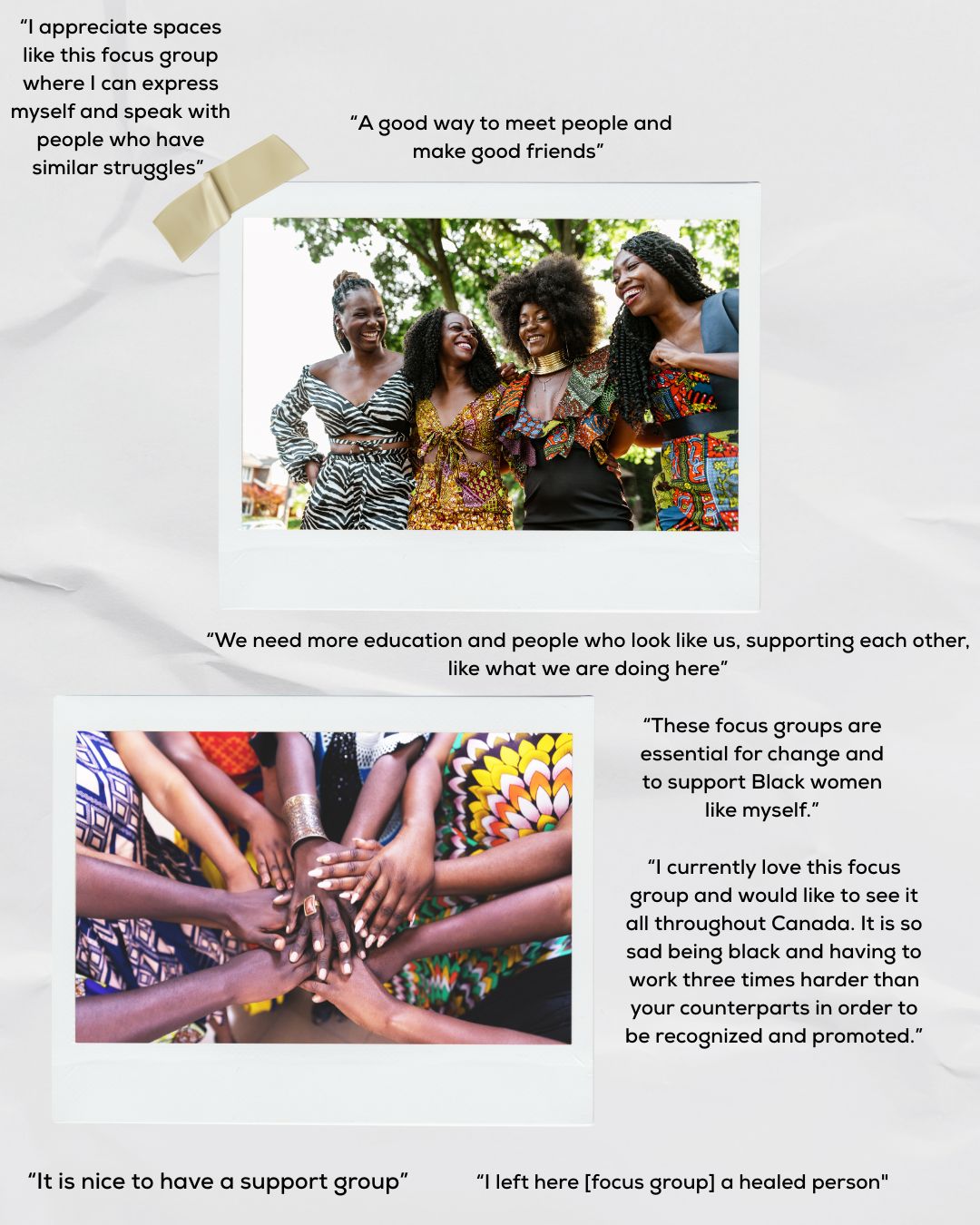Black-identified Women in Employment (BIWE) Initiative
 The Black-identified women in employment (BIWE) initiative explores how Black women access the workforce. This initiative aims to examine systemic issues and barriers, by conducting research on their experiences, including longevity and career advancement in various roles. By highlighting these challenges, integrating their voices, and analyzing current data, and policies, we seek to inform and advocate for more equitable and inclusive employment practices.
The Black-identified women in employment (BIWE) initiative explores how Black women access the workforce. This initiative aims to examine systemic issues and barriers, by conducting research on their experiences, including longevity and career advancement in various roles. By highlighting these challenges, integrating their voices, and analyzing current data, and policies, we seek to inform and advocate for more equitable and inclusive employment practices.

BIWE is centered on creating a space for Black-identified women to feel safe and supported to share their experiences, network, and connect with others who understand and have faced similar challenges in accessing the workforce. Collectively, we can effect change.
Did You Know?
Black women have a lower overall labour market outcome than the general population, with lower employment and median annual income rates and higher unemployment rates.1
8.8% of Black women with university degrees are unemployed, compared to 5.7% of white women with high school diplomas. 5
Women in Employment in Canada
In 1950, less than 25% of women in Canada were in the labor force, but this number grew to over 75% by the 1990s, and has remained above 80% for core-aged individuals in recent years 1
In 2021, the unemployment rate for Black women was considerably higher than for the rest of the female population. 2
Women labour force participation in Canada, reached a record high of 85.7% in July 2023 3 and yet:
- the gender wage gap narrowed from 82 cents to 89 cents for every man’s dollar between 1997 and 2024 4
- Black women only earned 67 cents for every white woman’s dollar
- women remain underrepresented in management roles, occupying only 30% of senior management positions and 35% of other management positions as of January 2025 4
- white women are twice as likely to hold a managerial position compared to Black women (10.4% vs 5.1%) 6
- Black women are highly concentrated in lower-paid care sectors (33.5%) and,
- have lower representation in education and public administration sectors, where earnings are higher and gender pay gaps smaller6
Gender-based Violence (GBV) and the Workplace
Gender-based violence (GBV) in the workplace is a serious and pervasive issue that undermines the safety, dignity, and equality of employees, particularly women, gender-diverse individuals, and other marginalized groups. Addressing this issue is essential in fostering inclusive and respectful work environments. BIWE acknowledges the profound and lasting impact GBV has on individuals and workplace culture, reinforcing the need for proactive polices, education and support systems to prevent and respond effectively to GBV.
- 47% of women have experienced some form of harassment or sexual assault in their career compared to 31% of men7
- Women aged 25-35 face the highest rates of workplace harassment7
- 44% of women report experiencing inappropriate sexualized behaviour at work (e.g., jokes, comments, unwanted attention.) compared to 29% of men7
- 13% of women have been sexually assaulted in a workplace context at some point in their working lives compared to 3% of men.7
- 4% of women report sexual harassment in the workplace within a single year compared to <1% of men8
- Healthcare workers see higher rates of reported harassment8

Shaping the Future: Black-identified Women in Employment (BIWE)
Shaping the Future: Black-identified Women in Employment (BIWE) is an ongoing research project led by METRAC: Action on Violence and funded by Women and Gender Equality Canada. Our initiative aims to document how systemic barriers shape the careers of Black-identified women in Ontario through gathering empirical evidence on hiring, retention, advancement, pay, and workplace inclusion.
Our four pillars
- workplace equality
- representation and leadership
- career opportunities and mentorship
- data-driven recommendations
The project aims to:
- examine systemic barriers to workplace inclusion
- reveal challenges in wage equity, promotions, contract type and security
- support the development of more inclusive workplace policies
- drive change through mentorship, training, and evidence-based recommendations
By identifying these issues, we can have a better understanding of employment disparities and support future efforts for change.
Our Research Methodology

Our research focusses on the experiences of Black-identified women in Ontario and uses a mixed method to surface patterns and practical supports for workplace equity.
- long-term participant tracking
- one-on-one interviews
- surveys
- workshops on employment rights and human rights
- ethical and practical commitments
All participation is voluntary and based on informed consent. We provide multiple ways to participate including virtual, phone, one-on-one, and in-person sessions. We work with community partners to ensure cultural safety and accessibility.
Through these methods, we aim to build a data-informed foundation for systemic change, amplify underrepresented voices, and co-create strategies that support equity, leadership, and opportunity.
Communities we serve
BIWE serves Black-identified women across urban, suburban, and rural Ontario. Those in precarious or underrepresented sectors, youth entering the workforce, mid-career professionals seeking advancement, and community leaders and advocates. Allies and employers may participate in selected surveys and public programming to broaden systemic insight.
Outcomes we are Striving to Achieve
Our goal is to create lasting impacts by addressing the root causes of inequity and building pathways for Black-identified women to thrive professionally. Through this project, we aim to:
- elevate voices: ensure lived experiences are heard and reflected in employment policy and practice
- strengthen representation: support the advancement of Black-identified women into leadership roles where they can influence decision-making and drive change
- build community capacity: provide tools, knowledge, and networks that empower Black-identified women to advocate for themselves
- inform policy: use data and personal narratives to shape recommendations that promote fair pay, career mobility, and inclusive hiring practices
- foster accountability: encourage organizations to examine their practices and commit to measurable actions that support racial and gender equity
Why you should join:
- your participation will directly contribute to the development of recommendations for improving workplace inclusion, wage equity, and career advancement
- share your experiences and insights to help showcase the unique challenges Black-identifying women face in the workplace
- engage with fellow Black-identifying women, this is an opportunity to build relationships that can foster ongoing support and community

How to get involved

- join a focus group sign up via METRAC’s project page or contact us by email.
- take our survey on Building Better Workplaces.
- volunteer
- follow us on Instagram, Like or Share our posts on Instagram or Facebook
1 Statistics Canada. (2025, September 22). The Daily — Labour market outcomes of the Black populations in Canada, 2020 to 2025. Statcan.gc.ca. https://www150.statcan.gc.ca/n1/daily-quotidien/250922/dq250922c-eng.htm
2 Statistics Canada. (2021, February 24). The Daily — Study: A labour market snapshot of Black Canadians during the pandemic. Www150.Statcan.gc.ca. https://www150.statcan.gc.ca/n1/daily-quotidien/210224/dq210224b-eng.htm
3 Women and Gender Equality Canada. (2025a, January 15). Government of Canada strengthens women’s sector capacity to reduce barriers and advance gender equality. Canada.ca; Government of Canada. https://www.canada.ca/en/women-gender-equality/news/2025/01/government-of-canada-strengthens-womens-sector-capacity-to-reduce-barriers-and-advance-gender-equality.html
4 Women and Gender Equality Canada. (2025b, September 8). Facts, stats, and impact: Gender equality – Canada.ca. Canada.ca. https://www.canada.ca/en/women-gender-equality/gender-equality/facts-stats-impact.html
5 Government of Ontario. (2019). Ontario’s Anti-Black Racism Strategy. Ontario.ca. https://www.ontario.ca/page/ontarios-anti-black-racism-strategy
6 Bonikowska, A. (2024). Gender earnings ratio differences among population groups in Canada. Statcan.gc.ca. https://doi.org/10.25318/36280001202401100003-eng
7Statistics Canada. (2024, February 12). The Daily — Gender Results Framework: A new data table on workplace harassment. Www150.Statcan.gc.ca. https://www150.statcan.gc.ca/n1/daily-quotidien/240212/dq240212a-eng.htm
8Moyser, M., & Hango, D. (2018, December 17). Harassment in Canadian workplaces. Statcan.gc.ca; Government of Canada, Statistics Canada. https://www150.statcan.gc.ca/n1/pub/75-006-x/2018001/article/54982-eng.htm

